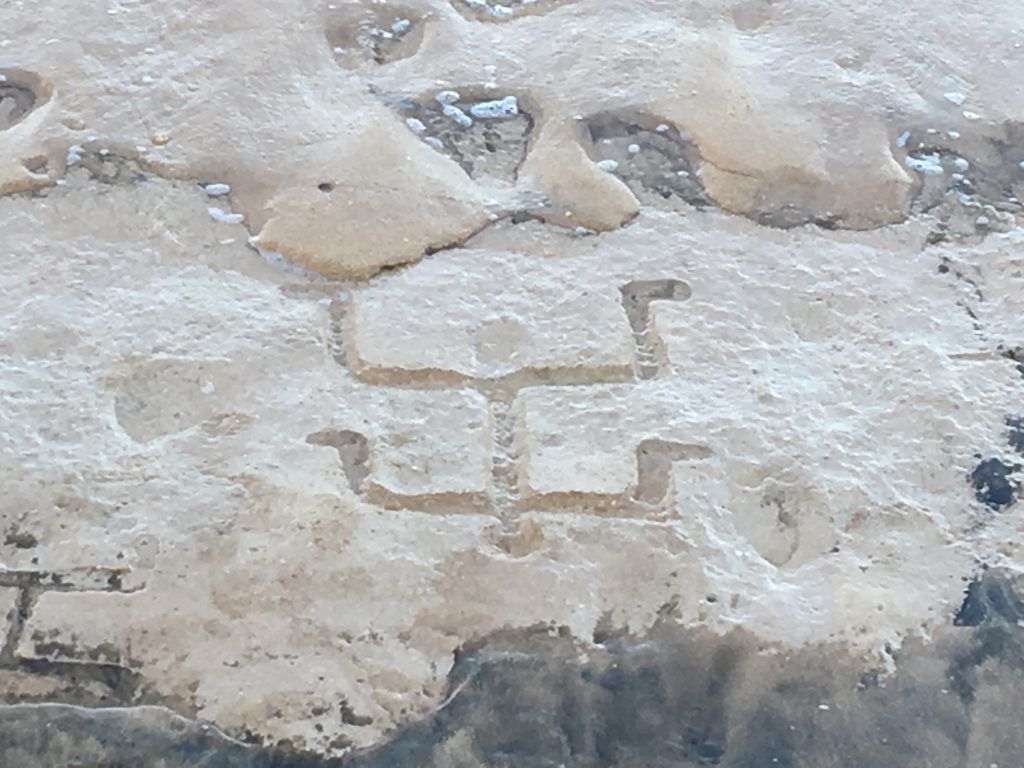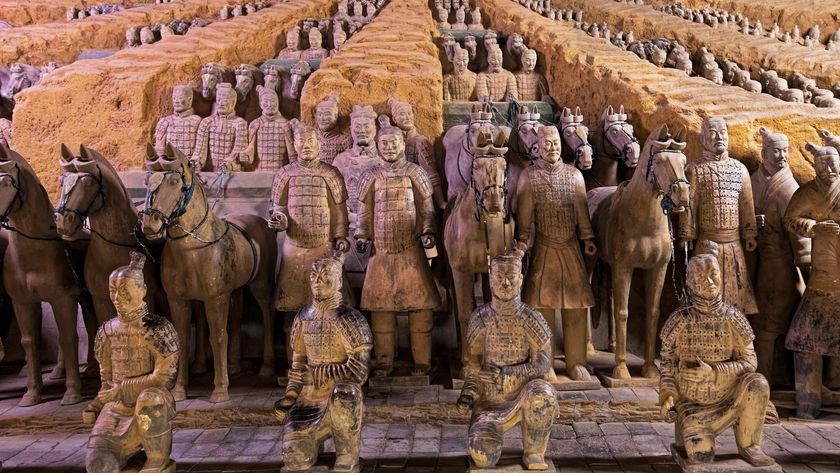Shifting Sands Reveal 400-Year-Old Petroglyphs in Hawaii

Shifting sands on a Hawaiian beach have revealed — and then concealed again — carvings that Hawaii's indigenous people made on the shoreline at least 400 years ago.
Two tourists from Texas stumbled across the petroglyphs last month on Oahu's Waianae Coast on the western side of the island.
"It was just a stroke of luck," Lonnie Watson, one of the visitors, said in a statement issued by the Hawaii Department of Land and Natural Resources. A beam of light happened to hit one of the petroglyphs, which caught Watson's attention. [See Photos: Petroglyphs Discovered in Hawaii]
So far, 17 carvings have been found in the sandstone shoreline, including one measuring almost 5 feet (1.5 meters) long. Most are of human figures, and some include carvings of the figures' fingers, said Alton Exzabe, an archaeologist with the U.S. Army, which manages many of the archeological sites in Hawaii. Fingers and hands are somewhat unusual on Hawaiian petroglyphs, Exzabe said in a statement.
Also rare is finding petroglyphs directly on the shoreline. Some locals said that they've seen these carvings before, Exzabe said, but no one has recorded them scientifically. They've already been covered up again by the sands.
The petroglyphs "record our genealogy and religion," Glen Kila, a lineal descendent of some of the first aboriginal families of the Waianae coast, said in a statement. "It’s very important to know about the lineal descendants of the area and their understanding of these petroglyphs."
The plan for the preservation of the petroglyphs is still in its infancy, a Department of Land and Natural Resources spokesman told Live Science. The agency's State Historic Preservation Division (SHPD) will work with the Army to develop a plan. The petroglyphs are extremely fragile, and even brushing sand away from them can damage them, archaeologists said. [Stunning Sands Gallery: A Rainbow of Beaches]
Sign up for the Live Science daily newsletter now
Get the world’s most fascinating discoveries delivered straight to your inbox.
"They are an important part of Hawaii’s culture and while sands have covered them again, in time they will reappear and we want to make sure people know that they are fragile and culturally sensitive and should only be viewed; not touched," Alan Downer, SHPD administrator, said in a statement.
Petroglyph sites are scattered across the Hawaiian Islands. Among the most famous are the Pu`u Loa petroglyphs, which are easily accessible to visitors at Volcanoes National Park on the Big Island of Hawaii. According to the National Park Service, there are more than 23,000 petroglyphs at that site.
Early missionaries and anthropologists reported that aboriginal people made the petroglyphs to record travelers' passages. They also buried the umbilical cords of newly born babies at the site, a tradition meant to ensure long life.
Waianae Petroglphs Media Clips from Hawaii DLNR on Vimeo.
Original article on Live Science.

Stephanie Pappas is a contributing writer for Live Science, covering topics ranging from geoscience to archaeology to the human brain and behavior. She was previously a senior writer for Live Science but is now a freelancer based in Denver, Colorado, and regularly contributes to Scientific American and The Monitor, the monthly magazine of the American Psychological Association. Stephanie received a bachelor's degree in psychology from the University of South Carolina and a graduate certificate in science communication from the University of California, Santa Cruz.










